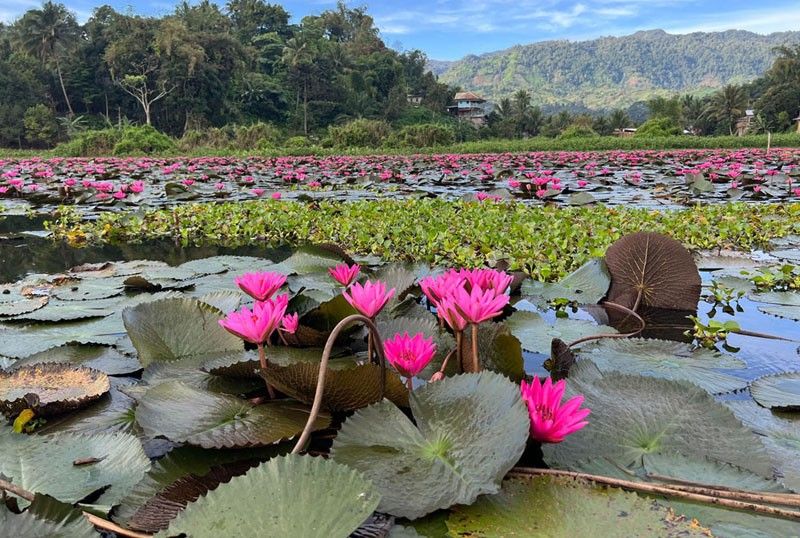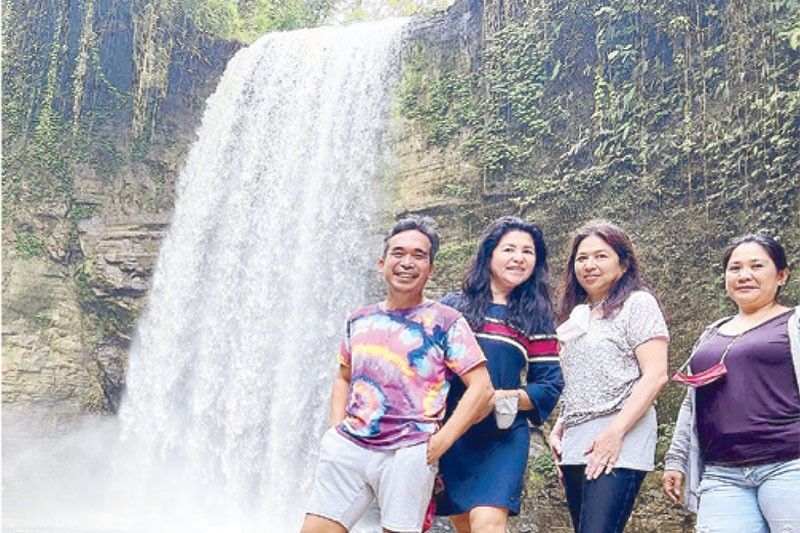Lake Sebu is magical

LAKE SEBU — Magical is its embrace. Even mesmerizing. The first-class municipality of Lake Sebu in South Cotabato is ensconced in tranquility, populated mostly by peace-loving T’boli people.
Lake Sebu is the marriage between mountains and forests, all verdant in their glory. It is the union between the pristine lake and the thousands of lotus flowers that float in the waters.
The sound of the cool breeze is the hymn of the place — inviting, invigorating, calming. There’s something about the peace enveloping Lake Sebu that is also celebratory. Nature has its way of exciting the heart, of keeping the mind at ease.
The word “sebu,” according to Mark Meyen, our tour guide and full-blooded T’boli, means lake or leaf in their language. The place lives up to its name. It’s calming like the placid lake. And the feel of the place is light like a falling leaf.
The people of Lake Sebu subsist on farming and fishing. The lake, 364 hectares in area and running as deep as 111 feet, teems with tilapia. So expect to be served chicharong tilapia (akin to pinaputok na tilapia) or kilawing tilapia (ceviche) in any restaurant or carinderia. It goes well with sweet grilled plantain on a wooden skewer.

It was mid-afternoon when my best friend Christine Dayrit, our dear friend Mel Martinez, our kind-hearted hosts Bhing and Peter Harris, who are among Davao’s power couples, and I arrived in our resort in Lake Sebu. It took us about four hours of driving from Davao to get to Lake Sebu. (Other visitors fly to General Santos City and from there they take a two-hour ride to Lake Sebu.)
On a separate habal-habal ride (motorcycle with improvised longer seat), we hopped and off we went to discover Lake Sebu. It was rough roads all the way to the 35-foot-high Hikong Falls but the majesty of the scenery was enough to assuage us. Visitors are not allowed to bathe in the falls. There are seven waterfalls that dot Lake Sebu. Each one is incomparable to the others.
If you go on a 200-meter zipline adventure, which is open from 8:30 a.m. to 4 p.m., you will witness the majesty of five other falls. Imagine you’re ziplining in mid-air and hearing the waterfalls’ soft and deep gurgling racing against the hissing of your breath. The experience is at once exhilarating and divine.
To a T’boli community Mark brought us. What a privilege to meet master weaver Sebulan Dulay, 72. She learned the art of weaving from her late mother-in-law Lang Dulay, who was conferred the National Living Treasures Award by the National Commission for Culture and the Arts in 1998. That same year, Lang Dulay’s t’nalak fabrics were featured in an exhibit at the Smithsonian Institution in in the US. Lang is known as the T’bolis dream weaver, because the designs of the cloth that the community wove appeared in her dreams.
Sebulan, now the master weaver, also is a dream weaver. She has few designs that appeared in her dreams that she now shares with the women weavers.
By sunset, we sat by the ripple-less lake to witness the grandeur of nature. It was quiet. Even the birds in flight were silent as they retreated to the trees in Three Kings mountain. We sipped piña coladas and agreed that nothing beats being at peace at Lake Sebu.
The following day, long before sunrise, I pulled myself from the bed. The cold weather was conducive to still cuddle my pillow and wrap my body in the comforter. But that day was reserved for witnessing the blooming of the lotus flowers.

“Lotus flowers bloom only from 6 a.m. to 9 a.m. After that, most of them close their petals again. It’s like that every day,” Mark told me in the vernacular as I readied myself to hitch in his habal-habal.
Daybreak gave way to morning dew holding tightly on the tips of the leaves. The morning mist made the day colder, and it didn’t spare the side mirrors of Mark’s motorcycle. But Mark knows the terrain by heart. He even asked me to listen to the sounds of the morning — the crowing of roosters, the different humming of birds, the sound of the wind.

After navigating the sinewy roads of Lake Sebu, we arrived at the makeshift port where a number of owongs, traditional T’boli bancas, were moored. Banca rental is pegged at P300 for a few hours. Each owong is made from red lauan wood for durability and sturdiness, Mark informed us.
Mark got the paddle and to the lotus flowers we rowed. I was floored.
Thousands of pink lotus flowers float on the lake, a sight for the visitors whose owong cuts through their presence. Each pink bloom is a testament to the beauty of nature. The lotus flowers seem to have a healing effect on a weary soul; the city dweller in me was instantaneously reinvigorated.
They thrive in their pink beauty — giving delight, promising hope, exacting joy. And they are just there. In their silence. Silence is powerful. Silence is beautiful. Silence is happiness.
Mark said you would know the depth of the lake based on the stalk of the lotus. The longer the stalk, the deeper the water is.
Shortly before 9 a.m., I coaxed Mark to return to the port. I did not have the heart to see the lotus flowers close their petals. I will remember them in full bloom in my heart.
I will remember the magic of Lake Sebu for a long time.
(For your new beginnings, e-mail me at bumbaki@yahoo.com. I’m also on Twitter @bum_tenorio and Instagram @bumtenorio. Have a blessed weekend.)
- Latest





























